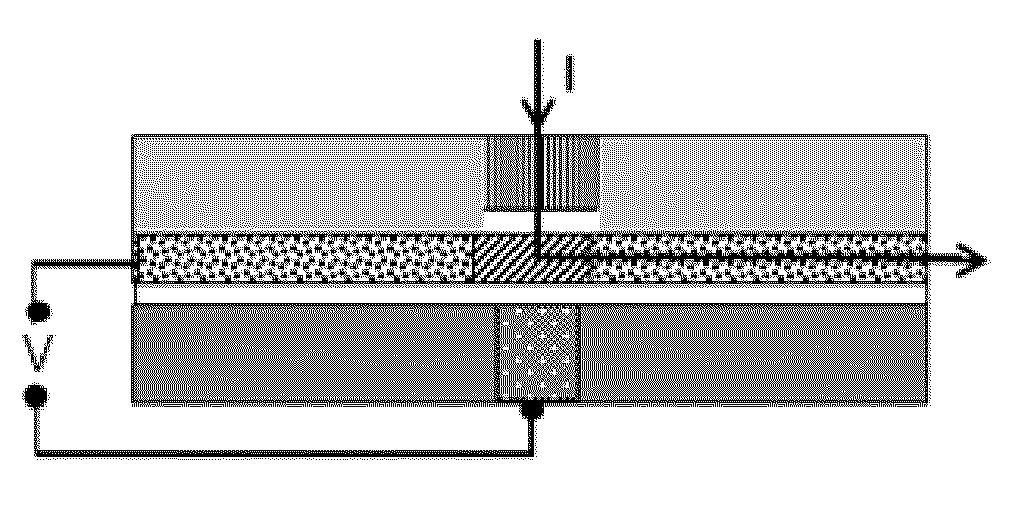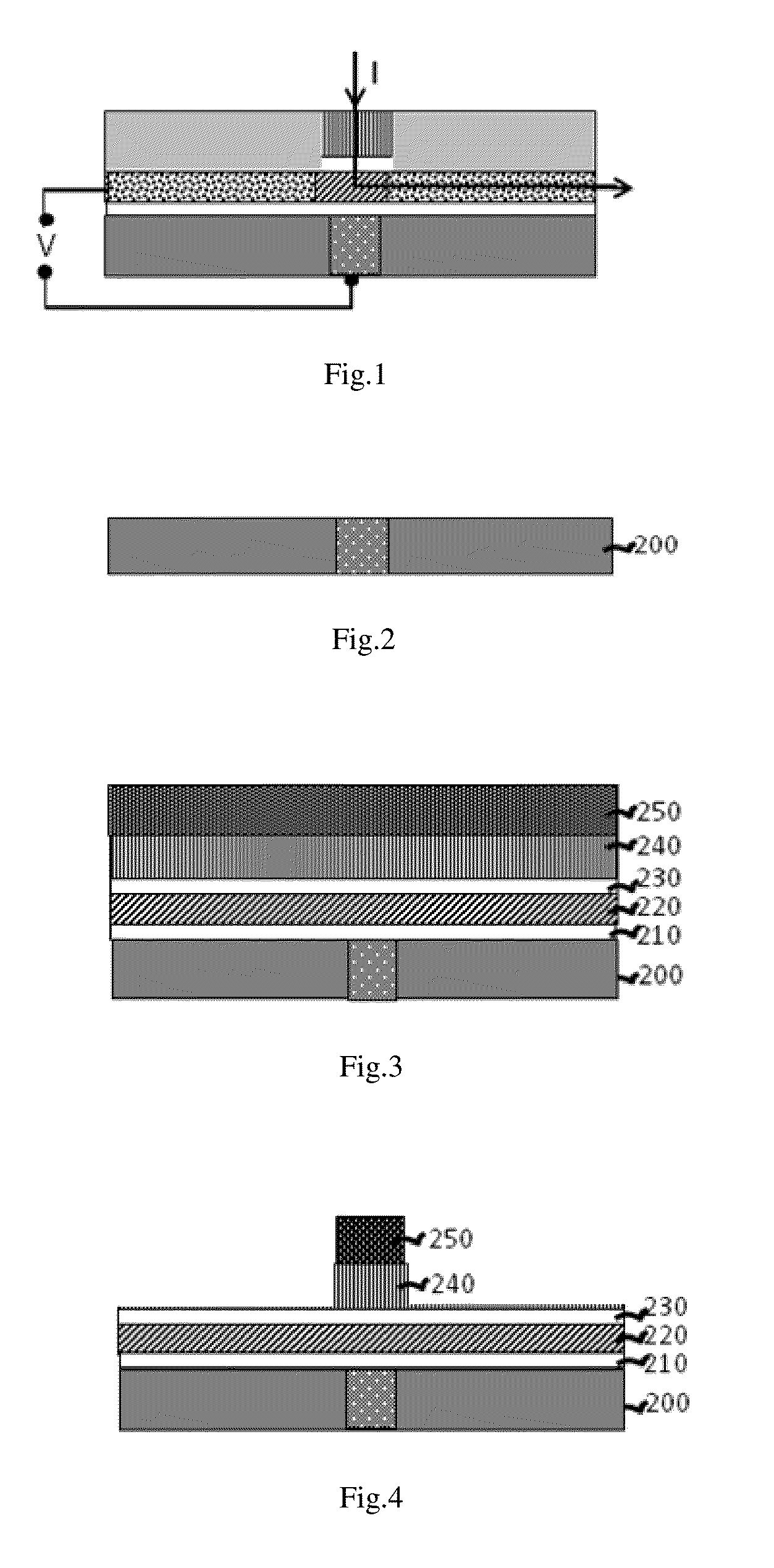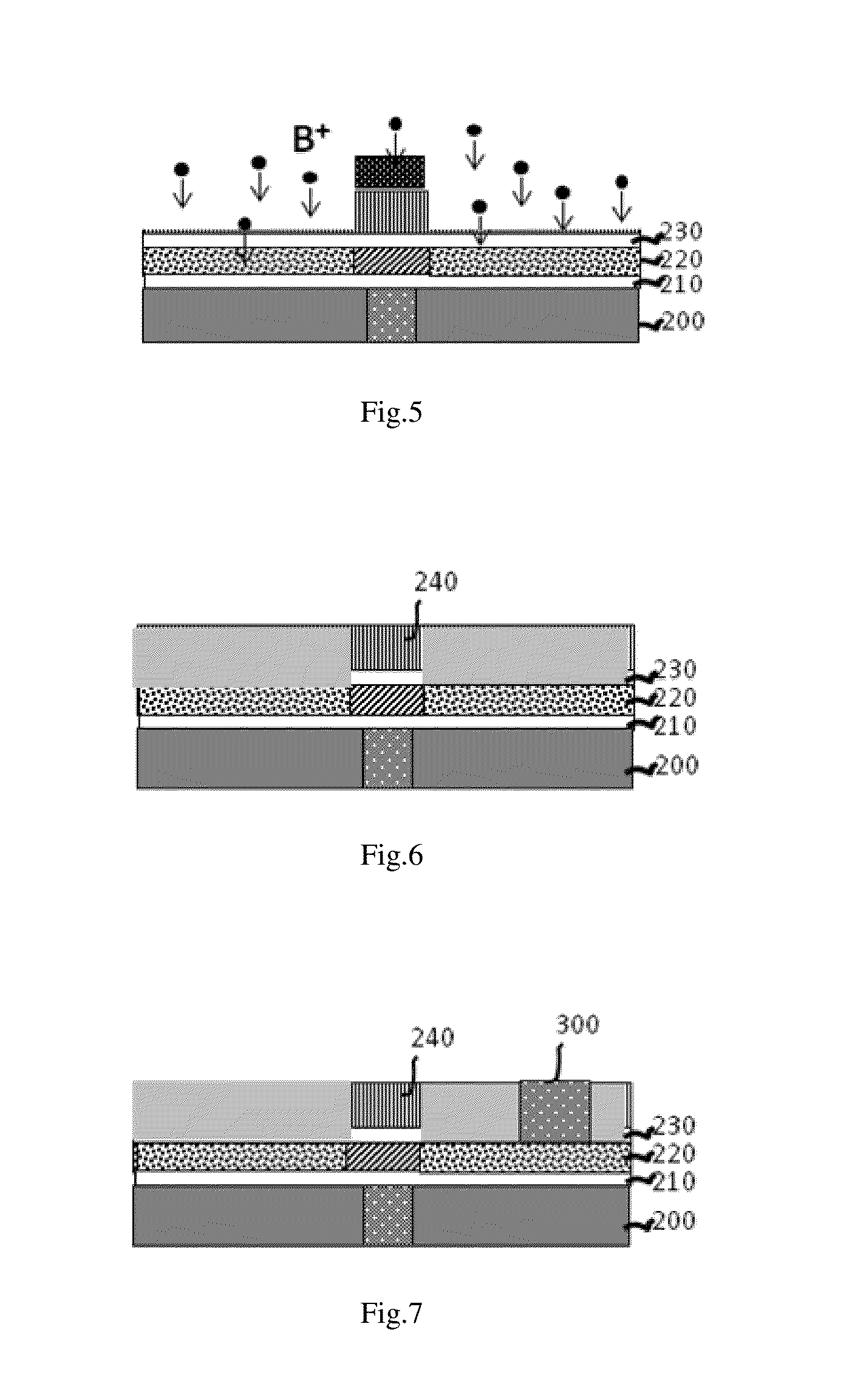Method to make three-terminal MRAM
a three-terminal, memory technology, applied in the direction of magnetic field-controlled resistors, galvano-magnetic material selection, semiconductor devices, etc., can solve the problems of information readout errors increasing, value changes, and element unrecordable, so as to reduce the switching energy barrier of the recording layer, the effect of reducing the switching energy barrier
- Summary
- Abstract
- Description
- Claims
- Application Information
AI Technical Summary
Benefits of technology
Problems solved by technology
Method used
Image
Examples
Embodiment Construction
[0023]The three-terminal spin transfer torque transistor magnetic random access memory (ST3-MRAM) contains a digital line at the bottom, a bit line on the top, and a magnetic memory cell in the middle (FIG. 1). The middle memory cell has a bottom insulating layer (ILD), a magnetic memory layer, a dielectric MgO tunneling layer and a top magnetic reference layer. The top reference layer has perpendicular magnetization to the plane, and the polarization of the middle memory layer can be either perpendicular to the plane or in the plane depending on the voltage applied to the middle memory layer across the bottom ILD layer. Both read and write current flow through the top reference layer and middle memory layer. The digital line has a small contact area with the insulating layer below the memory cell which helps to reduce writing current when a voltage pulse is applied.
[0024]A device substrate (FIG. 2) contains a VIA (200) in the middle which is connected to the bottom CMOS control cir...
PUM
 Login to View More
Login to View More Abstract
Description
Claims
Application Information
 Login to View More
Login to View More - R&D
- Intellectual Property
- Life Sciences
- Materials
- Tech Scout
- Unparalleled Data Quality
- Higher Quality Content
- 60% Fewer Hallucinations
Browse by: Latest US Patents, China's latest patents, Technical Efficacy Thesaurus, Application Domain, Technology Topic, Popular Technical Reports.
© 2025 PatSnap. All rights reserved.Legal|Privacy policy|Modern Slavery Act Transparency Statement|Sitemap|About US| Contact US: help@patsnap.com



